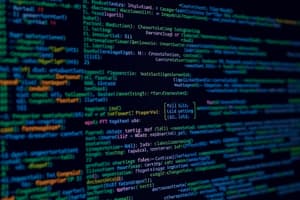Podcast
Questions and Answers
What is another name for a derived class?
What is another name for a derived class?
- Sub class (correct)
- Base class
- Super class
- Main class
What is a distinct header for each column of a table called?
What is a distinct header for each column of a table called?
- Attribute (correct)
- Tuple
- Domain
- Record
Which of the following is an unsupported C++ expression with respect to pointer ptr?
Which of the following is an unsupported C++ expression with respect to pointer ptr?
- ptr * 100 (correct)
- ptr++
- ptr - 100
- ptr + 80
Which command is a part of Data Query Language (DQL)?
Which command is a part of Data Query Language (DQL)?
What is the correct expansion of TCP?
What is the correct expansion of TCP?
Which of the following is not classified as a web browser?
Which of the following is not classified as a web browser?
Which of the following is an example of Full Duplex communication mode?
Which of the following is an example of Full Duplex communication mode?
Who is credited with the invention of HTML?
Who is credited with the invention of HTML?
Which port transfers eight bits of data at a time?
Which port transfers eight bits of data at a time?
According to the idempotent law, which statement is true?
According to the idempotent law, which statement is true?
If an array is a collection of homogenous elements, which statement is correct?
If an array is a collection of homogenous elements, which statement is correct?
Which of the following statements about function overloading are correct?
Which of the following statements about function overloading are correct?
What type of error is present in the given program segment regarding class declaration?
What type of error is present in the given program segment regarding class declaration?
Which constructor is defined as one that does not accept any arguments?
Which constructor is defined as one that does not accept any arguments?
What is a characteristic of the PS/2 port?
What is a characteristic of the PS/2 port?
In the context of data structures, what statement is true about arrays?
In the context of data structures, what statement is true about arrays?
Which of the following is an example of a non-primitive data structure?
Which of the following is an example of a non-primitive data structure?
What is a pointer in C++?
What is a pointer in C++?
Which operation is NOT typically performed on binary files in C++?
Which operation is NOT typically performed on binary files in C++?
Which of the following best describes proprietary software?
Which of the following best describes proprietary software?
What HTML tag is used to insert an image in a webpage?
What HTML tag is used to insert an image in a webpage?
What type of inheritance allows a class to inherit from multiple classes?
What type of inheritance allows a class to inherit from multiple classes?
Which of the following is NOT a basic operation performed on a queue?
Which of the following is NOT a basic operation performed on a queue?
What is the primary function of a destructor in a C++ class?
What is the primary function of a destructor in a C++ class?
Flashcards are hidden until you start studying
Study Notes
Computer Science Exam Notes - Class II PUC
- Parallel Port: Transfers data in parallel, sending 8 bits simultaneously, providing faster data transfer speeds compared to serial ports.
- Idempotent Law: A logic law stating that repeating an operation (e.g., ANDing a value with itself) results in the same output.
- Array: Homogeneous data structure, meaning it stores elements of the same data type, and is considered linear since elements are accessed sequentially.
- Constructor: Special function invoked automatically when an object of a class is created, initializing the object’s data members. Constructors can be parameterized to accept input values.
- Derived Class: Also known as a subclass, it inherits properties and functions from a base (super) class, enabling code reusability and polymorphism.
- Pointer: Variable storing the memory address of another variable. Allows direct manipulation of data stored in memory.
- Attribute: Distinct header identifying each column in a table, representing a specific characteristic or property of the stored data.
- Data Abstraction: Hides implementation details, exposing only essential functionalities to users, promoting modularity and simplifying interaction with complex systems.
- Motherboard: Main circuit board within a computer system, housing vital components like the CPU, RAM, and expansion slots.
- Non-primitive Data Structure: Data structure built upon primitive data types (int, char, float) to store complex data, with examples including arrays, linked lists, and trees.
- Queue: Abstract data structure adhering to the First-In, First-Out (FIFO) principle, with operations like enqueue (adding to the rear), dequeue (removing from the front), and peek (viewing the front element).
- Object-Oriented Programming (OOP): Programming paradigm emphasizing data abstraction, encapsulation, inheritance, and polymorphism, enabling code reusability and modularity.
- Friend Function: Function granted access to private and protected members of a class, outside the class itself, violating information hiding but sometimes required for specific operations.
- Destructor: Special function automatically called when an object of a class goes out of scope, performing cleanup operations and releasing resources allocated to the object.
- Inheritance: Mechanism allowing a derived class to inherit attributes and methods from its base class, fostering code reuse and creating hierarchies of related classes.
- Single Level Inheritance: Derived class directly inherits features from a single base class.
- Multilevel Inheritance: Derived class inherits features from another derived class, which itself inherited from a base class.
- SQL (Structured Query Language): Special-purpose programming language designed for managing and manipulating data in relational databases.
- DQL (Data Query Language): Subset of SQL responsible for retrieving data from databases.
- Full Duplex Communication: Communication mode where both parties can transmit and receive information simultaneously, enabling bidirectional and efficient data transfer.
Studying That Suits You
Use AI to generate personalized quizzes and flashcards to suit your learning preferences.




